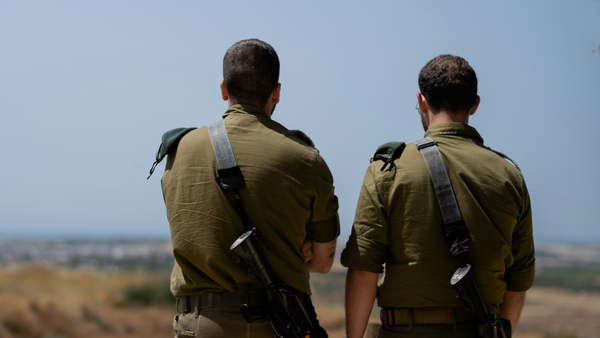
The planes gave it away. From his home in Chico, Michael Steinberg could hear how quickly they were arriving to respond to the fire tearing through the university city’s Upper Bidwell Park – and then he saw the plume of smoke. It was time to get to work.
“I immediately knew what was happening,” he said.
While thousands of people fled from the rapidly growing blaze that started in the northern California town last Wednesday, that night and every night after, Steinberg raced toward the flames.
Acres burned
US wildfires are measured in terms of acres. While the size of a wildfire doesn’t necessarily correlate to its destructive impact, acreage provides a way to understand a fire’s footprint and how quickly it has grown.
There are 2.47 acres in a hectare, and 640 acres in a square mile, but this can be hard to visualise. Here are some easy comparisons: one acre equates to roughly the size of an American football field. London’s Heathrow airport is about 3,000 acres. Manhattan covers roughly 14,600 acres, while Chicago is roughly 150,000 acres, and Los Angeles is roughly 320,000 acres.
Megafire
A megafire is defined by the National Interagency Fire Center as a wildfire that has burned more than 100,000 acres (40,000 hectares). That’s an area about the size of Rhode Island.
Containment level
A wildfire’s containment level indicates how much progress firefighters have made in controlling the fire. Containment is achieved by creating perimeters the fire can’t move across. This is done through methods such as putting fire retardants on the ground, digging trenches, or removing brush and other flammable fuels.
Containment is measured in terms of the percentage of the fire that has been surrounded by these control lines. A wildfire with a low containment level, such as 0% or 5%, is essentially burning out of control. A fire with a high level of containment, such as 90%, isn’t necessarily extinguished but rather has a large protective perimeter and a rate of growth that is under control.
Evacuation orders and warnings
Evacuation warnings and orders are issued by officials when a wildfire is causing imminent danger to people’s life and property. According to the California office of emergency services, an evacuation warning means that it's a good idea to leave an area or get ready to leave soon. An evacuation order means that you should leave the area immediately.
Red flag warning
A red flag warning is a type of forecast issued by the National Weather Service that indicates when weather conditions are likely to spark or spread wildfires. These conditions typically include dryness, low humidity, high winds and heat.
Prescribed burn
A prescribed burn, or a controlled burn, is a fire that is intentionally set under carefully managed conditions in order to improve the health of a landscape. Prescribed burns are carried out by trained experts such as members of the US forest service and indigenous fire practitioners. Prescribed burns help remove flammable vegetation and reduce the risk of larger, more catastrophic blazes, among other benefits.
Prescribed burning was once a common tool among Native American tribes who used “good fire” to improve the land, but was limited for much of the last century by a US government approach based on fire suppression. In recent years, US land managers have returned to embracing the benefits of prescribed burns, and now conduct thousands across the country every year.
Steinberg, a fourth-year geography student at California State University, Chico, has spent the last two years covering the state’s wildfires and extreme weather. In that time he has amassed a significant following – from weather buffs to local residents looking for on-the-ground updates and vivid images of the blazes.
This week, the 21-year-old photojournalist and professional storm chaser documented the Park fire from the frontlines, tracing its footprint from the rugged canyons and tinder dry grasslands of the Lassen Foothills to rural mountain communities.
The fire started last Wednesday when authorities say a man pushed a burning car into a ravine in Chico. Amid grueling temperatures and strong winds, the fire exploded through the dry landscape, becoming California’s fifth largest on record. By Wednesday morning, it had grown to more than 386,000 acres, and destroyed more than 270 structures.
The region and Butte county in particular has been hit again and again by destructive and deadly wildfires in recent years. The 2018 Camp fire killed 85 people and destroyed the town of Paradise. Just two years later, the North Complex fire scorched 318,000 acres (129,000 hectares) in Butte and Plumas counties and killed 16 people. In 2021, the Dixie fire burned 963,000 acres (390,000 hectares) – the largest single fire in state history.
This area is particularly conducive to flames thanks in part to its steep canyons and seasonal winds. Fire is a necessary part of the ecosystem, but decades of misguided fire suppression policies, forest management practices and a landscape that has grown hotter and drier amid the climate crisis have led to increasingly devastating blazes.
When Steinberg spotted the plume outside the window on the eastern edge of town, given the fuels and the winds, he saw the potential for another major fire right away.
“I know how thick those fuels are, how there’s been no burn history in that area,” he said. “It’s a very remote area. And it’s hard to get firefighters in and out. I just didn’t expect the fire to move that quickly that fast.”
Overnight, the fire grew from 6,500 acres (2,630 hectares) to more than 45,000 (18,000 hectares).
***
Butte county is fire country, Steinberg says, which makes it a fitting place for him. Originally from the Portland area, he has long been fascinated by fire. The first time he came close to a wildfire, at age 10, he found himself drawn to it rather than scared.
“Seeing how the smoke just interacted with the atmosphere. That was something that I’d never seen before and as a 10-year-old kid, that just really stuck in my head,” he said.
Steinberg moved to Chico in 2021 in order to be closer to his grandparents and the mountains and forests he had grown up visiting. He started as an English major at the university because he loved to write, but quickly realized geography – and fire – was his passion. By his second year of college, he ventured out to his first fire armed with a camera, helmet, protective gear and a fire shelter.
“The first thing that I noticed was that I never knew how loud it was. You have aircraft flying over, engines, the bulldozers, chainsaws,” he said. “It wasn’t that big of a fire, which was actually good in a sense for me, because I needed that experience. I didn’t want to be a deer caught in the headlights.”
Years of playing baseball had helped him learn to keep his emotions in check, he said, so when he found himself on the fire line, he was able to keep calm and focus on filming. In the last two years, he has covered more than 20 fires, including the deadly 2022 Mill fire in the town of Weed and the Mosquito fire just a few days later, documenting the flames and their aftermath alongside the firefighters battling the blazes.
Steinberg now works as a reporter for Watch Duty, an app providing real-time updates about wildfires and a stringer for Live Storms Media. He balances his studies and wildfire coverage, sometimes missing a few days of class (which professors have generally been understanding about) and a job coaching youth baseball.
His studies have given him a greater understanding of fire behavior and how it interacts with the landscape, and the importance of fire in the ecosystem, he said.
“We’ve just failed to understand what our ecosystems really need – and that’s fire on the ground, that low-intensity good fire to help our ecosystems thrive. Because they’re sick. Hundred years of suppression, this is what happens.”
It’s also made him particularly well-equipped to cover wildfires in this region, he said.
“I can see kind of what the fire might do,” he said, pointing to the second day of the fire when it threatened the community of Forest Ranch and raged out of control.
“I knew before this that if a fire were to start downslope in those canyons with a south-west wind event, that would be the biggest threat to Forest Ranch. Once it started to pick up steam, I knew that by then it was already gone, that there’s no way they could stop it.”
***
Out on the ashen and still smoking earth of the Big Chico Creek Ecological Reserve on Tuesday, Steinberg looks much like a wildland firefighter with his heavy boots and bright yellow shirt as he surveys the fire damage alongside his professor Don Hankins.
Steinberg said he takes safely seriously and never leaves without the proper gear, even on this day as the fire has mostly moved through the area. Reporting on fire is just one element of his life, but he considers himself a student of fire above all else, he said.
Together, Steinberg and Hankins, a pyrogeographer and Plains Miwok fire expert at California State University, Chico, take note of the swirls of white ash that show how intensely the fire burned, scorching the soil.
Hankins, who lives in nearby Forest Ranch and evacuated for days because of the Park fire, knew of his work before Steinberg took his class and is grateful for the updates he provides.
“I really appreciate the knowledge he brings in. Every single one of the fires, I get text and pictures, we’re talking about what’s happening live,” he said.
But as is the case for firefighters and other journalists, responding to such disasters takes a toll. There is the physical – exhaustion or even a small burn from an ember that flew far ahead of the main body of the fire – and the emotional. While covering the 2022 Mill fire, at age 19, Steinberg came across human remains.
“When I returned home, I just could not sleep. Because every time I closed my eyes, the memory would just replay in my head over and over,” he said. “It was difficult because I had to act like nothing had happened. Three days later, I was back in class. And then a couple days later, I was back down on the Mosquito fire.”
The experience led him to seek out therapy, but has not deterred him from covering wildfires.
Seeing devastation time and time again is difficult, and the Park fire has been particularly challenging for Steinberg, as it’s torn through the forests he grew up visiting, and threatened Manzanita Lake – the favorite spot of his late grandfather.
Residents frequently offer their thanks and encouragement to Steinberg for his almost daily coverage. He is quick to instead point to the work of firefighters, but says that the support bolsters his work.
“I’m only a reporter showing firefighters’ work, and what the fires are, but to know that people that I really care about in this community are appreciative of what I do, that’s what has kept my emotions in check,” he said.
Steinberg and other fire analysts expect this could be another million-acre-plus fire season, and he plans to be there to document it. And amid the charred landscape, Steinberg seeks out the silver linings.
Standing in the blackened soil of the Big Chico Creek Ecological Reserve , the smell of pine pitch and smoke thick in the air, Steinberg sees something to smile about – a seemingly still healthy acorn. “This will regrow back well,” he said.







